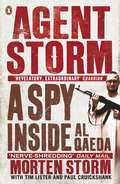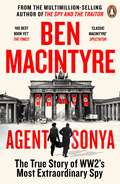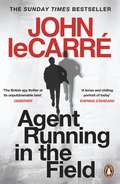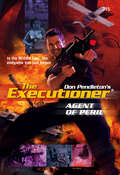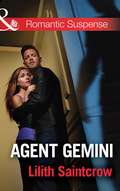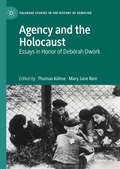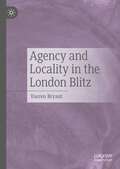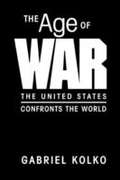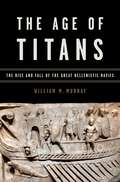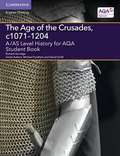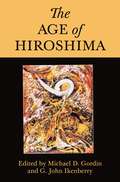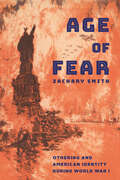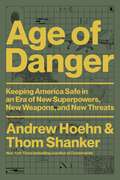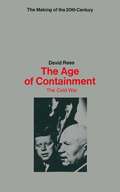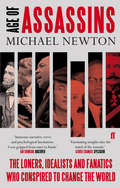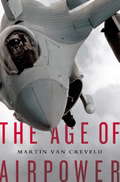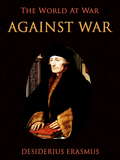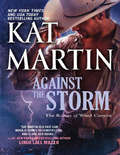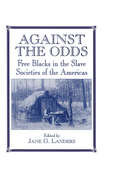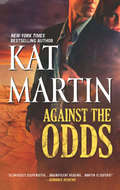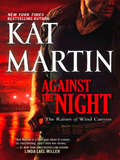- Table View
- List View
Agent Storm: My Life Inside al-Qaeda
by Morten Storm Paul Cruickshank Tim ListerAgent Storm - My Life Inside al-Qaeda by Morten StormMorten Storm was an unlikely Jihadist. A 6'1" red-haired Dane, Storm spent his teens with a biker gang or in jail. But after converting to Islam he embarked on a transformation that led from a militant madrassa in Yemen to a close friendship with Anwar al-Awlaki, the American-born cleric who would emerge as al-Qaeda's greatest threat to the West.Then Storm's story took another dramatic twist. He lost his faith and was recruited by the CIA, MI6 and MI5, becoming a double agent. His ultimate mission: to bring down his mentor al-Awlaki.This is the searing memoir of a man who sought purpose in a community of believers before rejecting their extremist ideology. In a quest for atonement he lived undercover for five years, travelling the world to complete high profile missions. As well as single-handedly thwarting multiple terrorist attacks, he led the intelligence services to some of al-Qaeda's most dangerous terrorists, all the while knowing his own life was expendable.Agent Storm takes readers inside the Jihadist world like never before, showing the daily life of zealous men set on mass murder: from dodging drones with al-Qaeda leaders in the Arabian desert to Jihadist gyms in Birmingham. It also gives a rare look inside the world's most powerful spy agencies, including their tradecraft, after-hours carousing - and their ruthless use of a beautiful blonde in a honey trap.Filled with hair-raising close calls, coded messages and chilling duplicity, Agent Storm is a captivating real-life thriller.
Agent Sonya: Lover, Mother, Soldier, Spy
by Ben MacIntyreThe incredible story of the greatest female spy in history, from one of Britain's most acclaimed historians In a quiet English village in 1942, an elegant housewife emerged from her cottage to go on her usual bike ride. A devoted wife and mother-of-three, the woman known to her neighbours as Mrs Burton seemed to epitomise rural British domesticity.However, rather than pedalling towards the shops with her ration book, she was racing through the Oxfordshire countryside to gather scientific intelligence from one of the country's most brilliant nuclear physicists. Secrets that she would transmit to Soviet intelligence headquarters via the radio transmitter she was hiding in her outdoor privy.Far from a British housewife, 'Mrs Burton' - born Ursula Kuczynski, and codenamed 'Sonya' - was a German Jew, a dedicated communist, a colonel in Russia's Red Army, and a highly-trained spy. From planning an assassination attempt on Hitler in Switzerland, to spying on the Japanese in Manchuria, and helping the Soviet Union build the atom bomb, Sonya conducted some of the most dangerous espionage operations of the twentieth century. Her story has never been told - until now.Agent Sonya is the exhilarating account of one woman's life; a life that encompasses the rise and fall of communism itself, and altered the course of history.'Macintyre does true-life espionage better than anyone else' John Preston'Macintyre has found a real-life heroine worthy of his gifts as John le Carré's nonfiction counterpart' New York Times 'This book is classic Ben Macintyre...quirky human details enliven every page... it is Macintyre's own vivid retelling of her perilous professional, personal and political life that make Agent Sonya such an accessible spy story.' Spectator
Agent Running in the Field: A BBC 2 Between the Covers Book Club Pick
by John le CarréPre-order John le Carré's new novel Agent Running in the Field now, and be one of the first to read it.'No other writer has charted - pitilessly for politicians but thrillingly for readers - the public and secret histories of his times' Guardian________________________________Nat, a 47 year-old veteran of Britain's Secret Intelligence Service, believes his years as an agent runner are over. He is back in London with his wife, the long-suffering Prue. But with the growing threat from Moscow Centre, the office has one more job for him. Nat is to take over The Haven, a defunct substation of London General with a rag-tag band of spies. The only bright light on the team is young Florence, who has her eye on Russia Department and a Ukrainian oligarch with a finger in the Russia pie. Nat is not only a spy, he is a passionate badminton player. His regular Monday evening opponent is half his age: the introspective and solitary Ed. Ed hates Brexit, hates Trump and hates his job at some soulless media agency. And it is Ed, of all unlikely people, who will take Prue, Florence and Nat himself down the path of political anger that will ensnare them all. Agent Running in the Field is a chilling portrait of our time, now heartbreaking, now darkly humorous, told to us with unflagging tension by the greatest chronicler of our age._______________________________'John le Carré is as recognisable a writer as Dickens or Austen' Financial Times'No writer has ever been better at turning the act of two people talking politely to each other across a desk into a blood sport' Telegraph
Agent Gemini: Conard County Witness His Christmas Assignment Agent Gemini Risk It All (Mills And Boon Romantic Suspense Ser.)
by Lilith SaintcrowA superspy meets her match in New York Times bestselling author Lilith Saintcrow's latest romance!
Agency and the Holocaust: Essays in Honor of Debórah Dwork (Palgrave Studies in the History of Genocide)
by Thomas Kühne Mary Jane ReinThe book assembles case studies on the human dimension of the Holocaust as illuminated in the academic work of preeminent Holocaust scholar Deborah Dwork, the founding director of the Strassler Center for Holocaust and Genocide Studies, home of the first doctoral program focusing solely on the Holocaust and other genocides. Written by fourteen of her former doctoral students, its chapters explore how agency, a key category in recent Holocaust studies and the work of Dwork, works in a variety of different ‘small’ settings – such as a specific locale or region, an organization, or a group of individuals.
Agency and Locality in the London Blitz
by Darren BryantThis book takes a fresh approach to the London Blitz by viewing this time through individual local boroughs of the metropolis. The term ‘London Blitz’ means that culturally we have become accustomed to understanding that the actual blitz experience was the same wherever in the capital one happened to be, despite some areas being hit more than others. This book illustrates how there were many London blitzes, not one, influenced by a myriad of metropolitan localities, and giving rise to an agency of locality that helped to shape the lived blitz experience. By walking through the streets of London, this book conducts a local area analysis, witnessing the blitz through six London localities, representative of the assorted administrative, economic, and socio-political variables prevalent in wartime London. Covering air raids alongside topics like the provision of shelters, homelessness, and communal feeding, it shows how any history of the London Blitz must acknowledge that it was an experience reflective of a varied metropolis.
The Age Of War: The United States Confronts The World (PDF)
by Gabriel KolkoIn this comprehensive, succinct - and provocative - overview of the last five decades of US foreign policy, Gabriel Kolko gives special emphasis to the period since 2000. Kolko argues that, as dangerous as the Cold War era was, we face far more instability and unpredictability now; the international environment is qualitatively more precarious than ever. Ranging from the Vietnam War to the war in Iraq, he critically appraises US responses to a world of complex new challenges. The result is a book with a unique voice. Sure to capture the attention of readers concerned with the troubled world we live in, ""The Age of War"" will also stimulate classroom discussion, serving as a powerful pedagogical tool.
The Age of Titans: The Rise and Fall of the Great Hellenistic Navies (Onassis Series in Hellenic Culture)
by William M. MurrayWhile we know a great deal about naval strategies in the classical Greek and later Roman periods, our understanding of the period in between--the Hellenistic Age--has never been as complete. However, thanks to new physical evidence discovered in the past half-century and the construction of Olympias, a full-scale working model of an Athenian trieres (trireme) by the Hellenic Navy during the 1980s, we now have new insights into the evolution of naval warfare following the death of Alexander the Great. In what has been described as an ancient naval arms race, the successors of Alexander produced the largest warships of antiquity, some as long as 400 feet carrying as many as 4000 rowers and 3000 marines. Vast, impressive, and elaborate, these warships "of larger form"--as described by Livy--were built not just to simply convey power but to secure specific strategic objectives. When these particular factors disappeared, this "Macedonian" model of naval power also faded away--that is, until Cleopatra and Mark Antony made one brief, extravagant attempt to reestablish it, an endeavor Octavian put an end to once and for all at the battle of Actium. Representing the fruits of more than thirty years of research, The Age of Titans provides the most vibrant account to date of Hellenistic naval warfare.
The Age of Titans: The Rise and Fall of the Great Hellenistic Navies (Onassis Series in Hellenic Culture)
by William M. MurrayWhile we know a great deal about naval strategies in the classical Greek and later Roman periods, our understanding of the period in between--the Hellenistic Age--has never been as complete. However, thanks to new physical evidence discovered in the past half-century and the construction of Olympias, a full-scale working model of an Athenian trieres (trireme) by the Hellenic Navy during the 1980s, we now have new insights into the evolution of naval warfare following the death of Alexander the Great. In what has been described as an ancient naval arms race, the successors of Alexander produced the largest warships of antiquity, some as long as 400 feet carrying as many as 4000 rowers and 3000 marines. Vast, impressive, and elaborate, these warships "of larger form"--as described by Livy--were built not just to simply convey power but to secure specific strategic objectives. When these particular factors disappeared, this "Macedonian" model of naval power also faded away--that is, until Cleopatra and Mark Antony made one brief, extravagant attempt to reestablish it, an endeavor Octavian put an end to once and for all at the battle of Actium. Representing the fruits of more than thirty years of research, The Age of Titans provides the most vibrant account to date of Hellenistic naval warfare.
The Age Of The Crusades, C1071-1204 (PDF)
by Richard Kerridge Michael Fordham David SmithA new series of bespoke, full-coverage resources developed for the AQA 2015 A/AS Level History. Written for the AQA A/AS Level History specifications for first teaching from 2015, this print Student Book covers The Age of the Crusades, c1071-1204 Breadth component. Completely matched to the new AQA specification, this full-colour Student Book provides valuable background information to contextualise the period of study. Supporting students in developing their critical thinking, research and written communication skills, it also encourages them to make links between different time periods, topics and historical themes.
The Age of Hiroshima
by Campbell Craig Alex Wellerstein Sean L. Malloy David Holloway Takuya Sasaki Shinsuke Tomotsugu Srinath Raghavan Wakana Mukai Matias Spektor Holger Nehring Kiichi Fujiwara Avery Goldstein Sonja D. Schmid Shampa Biswas Nina Tannenwald Francis GavinA multifaceted portrait of the Hiroshima bombing and its many legaciesOn August 6, 1945, in the waning days of World War II, the United States dropped an atomic bomb on the Japanese city of Hiroshima. The city's destruction stands as a powerful symbol of nuclear annihilation, but it has also shaped how we think about war and peace, the past and the present, and science and ethics. The Age of Hiroshima traces these complex legacies, exploring how the meanings of Hiroshima have reverberated across the decades and around the world.Michael D. Gordin and G. John Ikenberry bring together leading scholars from disciplines ranging from international relations and political theory to cultural history and science and technology studies, who together provide new perspectives on Hiroshima as both a historical event and a cultural phenomenon. As an event, Hiroshima emerges in the flow of decisions and hard choices surrounding the bombing and its aftermath. As a phenomenon, it marked a revolution in science, politics, and the human imagination—the end of one age and the dawn of another.The Age of Hiroshima reveals how the bombing of Hiroshima gave rise to new conceptions of our world and its precarious interconnectedness, and how we continue to live in its dangerous shadow today.
The Age of Hiroshima
by Campbell Craig Alex Wellerstein Sean L. Malloy David Holloway Takuya Sasaki Shinsuke Tomotsugu Srinath Raghavan Wakana Mukai Matias Spektor Holger Nehring Kiichi Fujiwara Avery Goldstein Sonja D. Schmid Shampa Biswas Nina Tannenwald Francis GavinA multifaceted portrait of the Hiroshima bombing and its many legaciesOn August 6, 1945, in the waning days of World War II, the United States dropped an atomic bomb on the Japanese city of Hiroshima. The city's destruction stands as a powerful symbol of nuclear annihilation, but it has also shaped how we think about war and peace, the past and the present, and science and ethics. The Age of Hiroshima traces these complex legacies, exploring how the meanings of Hiroshima have reverberated across the decades and around the world.Michael D. Gordin and G. John Ikenberry bring together leading scholars from disciplines ranging from international relations and political theory to cultural history and science and technology studies, who together provide new perspectives on Hiroshima as both a historical event and a cultural phenomenon. As an event, Hiroshima emerges in the flow of decisions and hard choices surrounding the bombing and its aftermath. As a phenomenon, it marked a revolution in science, politics, and the human imagination—the end of one age and the dawn of another.The Age of Hiroshima reveals how the bombing of Hiroshima gave rise to new conceptions of our world and its precarious interconnectedness, and how we continue to live in its dangerous shadow today.
Age of Fear: Othering and American Identity during World War I
by Zachary SmithAlthough Americans have long celebrated their nation's diversity, they also have consistently harbored suspicions of foreign peoples both at home and abroad. In Age of Fear, Zachary Smith argues that, as World War I grew more menacing and the presumed German threat loomed over the United States, many white "Anglo-Saxon" Americans grew increasingly concerned about the vulnerability of their race, culture, and authority. Consequently, they directed their long-held apprehensions over ethnic and racial pluralism onto their German neighbors and overseas enemies whom they had once greatly admired.Smith examines the often racially tinged, apocalyptic arguments made during the war by politicians, propaganda agencies, the press, novelists, and artists. He also assesses citizens' reactions to these messages and explains how the rise of nationalism in the United States and Europe acted as a catalyst to hierarchical racism. Germans in both the United States and Europe eventually took the form of the proverbial "Other," a dangerous, volatile, and uncivilized people who posed an existential threat to the nation and all that Anglo-Saxon Americans believed themselves to be. Exploring what the Great War meant to a large portion of the white American population while providing a historic precedent for modern-day conceptions of presumably dangerous foreign Others, Age of Fear is a compelling look at how the source of wartime paranoia can be found in deep-seated understandings of racial and millennial progress.
Age of Fear: Othering and American Identity during World War I
by Zachary SmithAlthough Americans have long celebrated their nation's diversity, they also have consistently harbored suspicions of foreign peoples both at home and abroad. In Age of Fear, Zachary Smith argues that, as World War I grew more menacing and the presumed German threat loomed over the United States, many white "Anglo-Saxon" Americans grew increasingly concerned about the vulnerability of their race, culture, and authority. Consequently, they directed their long-held apprehensions over ethnic and racial pluralism onto their German neighbors and overseas enemies whom they had once greatly admired.Smith examines the often racially tinged, apocalyptic arguments made during the war by politicians, propaganda agencies, the press, novelists, and artists. He also assesses citizens' reactions to these messages and explains how the rise of nationalism in the United States and Europe acted as a catalyst to hierarchical racism. Germans in both the United States and Europe eventually took the form of the proverbial "Other," a dangerous, volatile, and uncivilized people who posed an existential threat to the nation and all that Anglo-Saxon Americans believed themselves to be. Exploring what the Great War meant to a large portion of the white American population while providing a historic precedent for modern-day conceptions of presumably dangerous foreign Others, Age of Fear is a compelling look at how the source of wartime paranoia can be found in deep-seated understandings of racial and millennial progress.
Age of Danger: Keeping America Safe in an Era of New Superpowers, New Weapons, and New Threats
by Andrew Hoehn Thom ShankerAn urgent look at how America's national security machine went astray and how it fails to keep us safe—and what we can do to fix it. Again and again, American taxpayers are asked to open their wallets and pay for a national security machine that costs $1 trillion operate. Yet time and time again, the US government gets it wrong on critical issues. So what can be done? Enter bestselling author Thom Shanker and defense expert Andrew Hoehn. With decades of national security expertise between them and access to virtually every expert, they look at what&’s going wrong in national security and how to make it go right. Age of Danger looks at the major challenges facing America—from superpowers like Russia and China to emerging threats like pandemics, cybersecurity, climate change, and drones—and reimagines the national security apparatus into something that can truly keep Americans safe. Weaving together expert analysis with exclusive interviews from a new generation of national security leaders, Shanker and Hoehn argue that the United States must create an industrial-grade, life-saving machine out of a system that, for too long, was focused only on deterring adversaries and carrying out global military operations. It is a timely and crucial call to action—a call that if heeded, could save Americans lives, money, and our very future on the global stage.
Age of Assassins: A History of Conspiracy and Political Violence, 1865-1981
by Michael NewtonThese were the crimes that were meant to change the world, and sometimes did. The book connects the killing of the Kennedys or the murder that sparked the First World War with less well-known stories, such as the Berlin shooting of an instigator of the Armenian genocide or the attack on an American 'robber baron'. Taking in Malcolm X and Queen Victoria, Adolf Hitler and Andy Warhol, Charles Manson and Emma Goldman, Tsars, Presidents, and pop stars, Age of Assassins traces the process that turned thought into action and murder into an icon.In tackling the history of political violence, the book is unique in its range and attention to detail, summoning up an age of assassination that is far from over.
The Age of Airpower
by Martin Van CreveldAirpower, more than any other factor, has shaped war in the twentieth century. In this fascinating narrative history, Martin van Creveld vividly portrays the rise of the plane as a tool of war and the evolution of both technology and strategy. He documents seminal battles and turning points, and relates stories of individual daring and collective mastery of the skies.However, the end of airpower's glorious age is drawing near. The conventional wisdom to the contrary, modern precision guided munitions have not made fighter bombers more effective against many kinds of targets than their predecessors in World War II. U.S. ground troops calling for air support in Iraq in 2003 did not receive it any faster than Allied forces did in France in 1944. And from its origins on, airpower has never been very effective against terrorists, guerrillas, and insurgents. As the warfare waged by these kinds of people grow in importance, and as ballistic missiles, satellites, cruise missiles and drones increasingly take the place of quarter-billion-dollar manned combat aircraft and their multi-million-dollar pilots, airpower is losing utility almost day by day.
Against War (The World At War)
by Desiderius ErasmusA classic anti-war essay from the mid-1500s. Erasmus gives elegant arguments against war from both religious (Christian) and logical (economic, practical) points of view. He seems particularly alarmed and confused by Christians fighting wars with Christians. The problem, of course, is that people waging war only consider religious or logical reasons when they are looking for excuses to wage war.
Against the Storm: Against The Storm Against The Night Against The Sun (The Raines of Wind Canyon #4)
by Kat MartinRedheads like Maggie O'Connell are nothing but trouble.
Against the Odds: Free Blacks in the Slave Societies of the Americas
by Jane G. LandersThe seven contributions contained in this collection address various forms of manumission throughout the American South as well as the Caribbean. Topics include color, class, and identity on the eve of the Haitian revolution; where free persons of color stood in the hierarchy of wealth in antebellum
Against the Odds: Free Blacks in the Slave Societies of the Americas
by Jane G. LandersThe seven contributions contained in this collection address various forms of manumission throughout the American South as well as the Caribbean. Topics include color, class, and identity on the eve of the Haitian revolution; where free persons of color stood in the hierarchy of wealth in antebellum
Against the Odds: Against The Odds Against The Edge Against The Mark (The Raines of Wind Canyon #7)
by Kat MartinThis case may prove to be too hot to handle.
Against the Night: Against The Storm Against The Night Against The Sun (The Raines of Wind Canyon #5)
by Kat MartinHe knows what goes on in the dark. She’s got the face of an angel and the body of…well, isn’t that what he’d expect from an exotic dancer?
